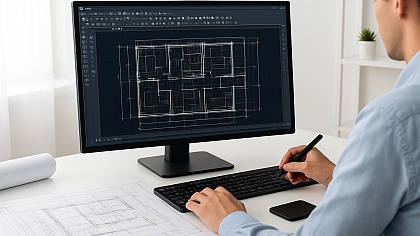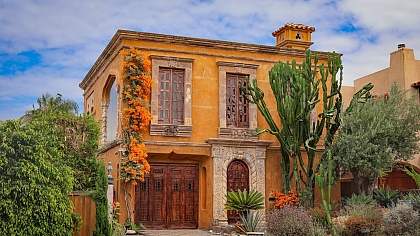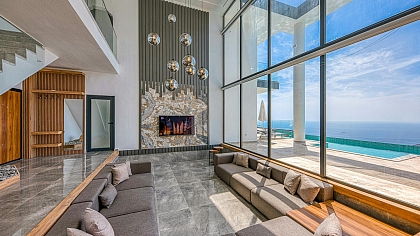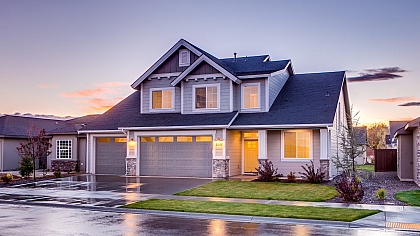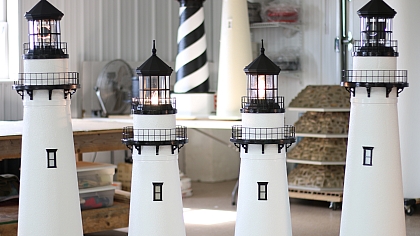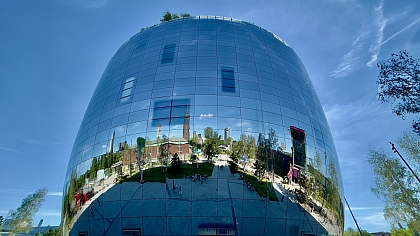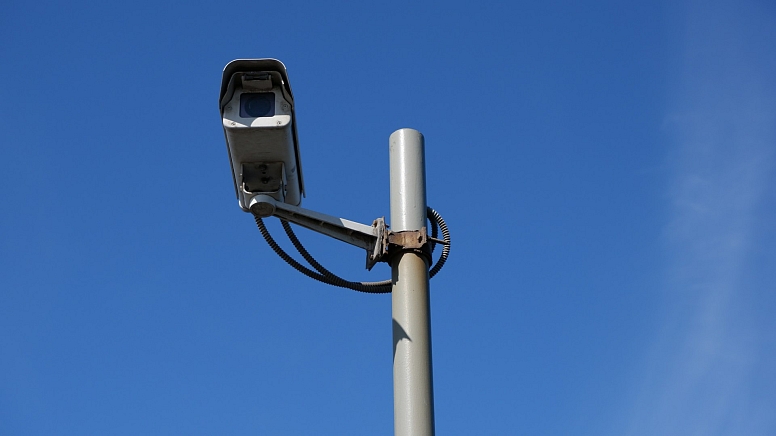
6 Benefits of Pairing Architecture With Intelligent Security
Security threats don't wait for convenient timing, and neither should your protection strategy. Modern businesses face an alarming reality: traditional reactive security measures are simply insufficient to safeguard valuable assets and personnel. The game-changing solution lies in the strategic integration of architectural design with intelligent security systems from day one. This approach transforms buildings from vulnerable structures into proactive defence fortresses, creating environments where security isn't an afterthought but a foundational element woven throughout every corner and corridor.
Enhanced Perimeter Protection Through Strategic Camera Placement
Strategic architectural planning creates the foundation for comprehensive perimeter security that actually works. When security considerations guide design decisions from the blueprint stage, you eliminate the costly trial-and-error approach that plagues most installations.
Recent testing has revealed a troubling reality about the performance of security systems. While some implementations of the same devices manage to perform quite well, with scores clustering around 70% to 80%, there's a noticeable spread across the spectrum. Many devices dip into the 40% to 60% range, indicating a middle ground of effectiveness that may not meet the high expectations set by controlled testing.
Properly planned construction site surveillance illustrates the critical way environmental and architectural factors determine system effectiveness. By integrating construction site video surveillance into the initial design, architects and security professionals can ensure equipment is optimally placed, avoiding issues such as limited coverage or obstructed views that frequently undermine retrofit solutions.
Optimizing Business Security Camera Positioning During the Design Phase
When planning for business security cameras, aligning their placement with established architectural sight lines enhances their coverage and effectiveness. Integrating business security cameras during the design stage avoids inefficiencies and ensures the surveillance system supports building functions seamlessly.
Architects who collaborate with security professionals during initial planning create natural surveillance corridors. These pathways eliminate awkward angles and reduce the total number of cameras needed for complete coverage.
Architectural Blind Spot Elimination with Live Video Monitoring
Integrating live video monitoring capabilities directly into the architectural design of a building ensures that surveillance professionals have the clear sight lines necessary for proactive protection. This design-driven integration enables live video monitoring to deliver better performance than approaches where the environment was not purposefully planned for security.
This proactive approach prevents the common problem of discovering blind spots only after installation is complete. Retrofitting solutions often require additional equipment and compromise aesthetic appeal.
Integration Points for Best Security Cameras for Business Applications
Selecting and installing the best security cameras for business applications is most effective when the architectural design phase includes considerations for their ideal locations, power needs, and future expandability. By planning infrastructure needs around the best security cameras for business, companies can streamline upgrades and avoid unnecessary structural alterations later.
Strategic camera placement during the design phase also considers future expansion needs. Conduit pathways and mounting infrastructure can accommodate system upgrades without major renovations.
Cost-Effective Security Infrastructure Through Architectural Planning
Early integration dramatically reduces security infrastructure costs while improving system reliability. This strategic approach prevents the expensive surprises that often accompany retrofit installations.
Studies show that over 80% of AI initiatives fail to deliver measurable results. However, when intelligent security systems are integrated into architectural planning from the start, success rates improve significantly because infrastructure requirements are addressed proactively.
Pre-Construction Security Conduit and Power Planning
Installing security infrastructure during construction costs approximately 60% less than retrofitting existing buildings. Conduit pathways, power distribution, and network connectivity integrate seamlessly with other building systems.
This approach also eliminates the aesthetic compromises that often accompany retrofit installations. Cable runs remain hidden, and equipment placement looks intentional rather than afterthought-driven.
Reducing Retrofit Expenses with Integrated Business Security Systems
Early and thoughtful infrastructure integration allows business security systems to function optimally, with dedicated support for power, network, and mounting. The cost and operational efficiency for business security systems are maximized when included in the initial construction process, rather than added as a retrofit.
Retrofit installations often encounter unexpected obstacles like structural interference, inadequate power capacity, or network limitations. These discoveries frequently double or triple initial budget estimates.
Long-Term ROI Analysis for Architectural Security Integration
Integrated security systems typically achieve full ROI within 18-24 months through reduced installation costs, lower maintenance requirements, and improved system reliability. Insurance premium reductions often offset additional upfront planning expenses.
Properties with professionally integrated security systems also command higher resale values and attract quality tenants more easily than buildings with obvious retrofit security additions.
Seamless Aesthetic Integration Without Compromising Security Effectiveness
Modern security integration balances protection needs with architectural beauty. This approach ensures that security systems enhance rather than detract from building aesthetics while maintaining full functionality.
Concealed Security Camera Housing in Architectural Elements
Creative architectural elements can hide security equipment without compromising performance. Custom millwork, decorative columns, and lighting fixtures often provide perfect concealment opportunities for cameras and sensors.
This approach maintains clean sight lines while protecting expensive equipment from vandalism and weather exposure. Concealed installations also reduce the institutional appearance that visible security equipment often creates.
Balancing Visual Appeal with Home Security Camera Requirements
When planning a residence, integrating a home security camera into existing architectural features such as eaves or decorative columns helps homeowners achieve comprehensive coverage while maintaining curb appeal. An architect’s input ensures that every home security camera blends seamlessly with the aesthetic vision of the home.
Strategic use of architectural features like eaves, dormers, and decorative elements can incorporate security equipment naturally. This approach maintains neighborhood aesthetics while ensuring robust protection.
Custom Architectural Solutions for High-Security Environments
High-security applications often require specialized architectural solutions that accommodate advanced equipment while maintaining visual appeal. Blast-resistant glazing, reinforced mounting points, and hidden infrastructure support sophisticated security systems.
These environments benefit from collaborative design processes where architects and security professionals work together to create solutions that meet both functional and aesthetic requirements.
Advanced Analytics Integration Through Smart Building Design
Smart building integration transforms security systems from passive recording devices into proactive threat detection networks. This transformation requires architectural planning that supports advanced analytics and AI-powered monitoring.
AI-Powered Behavioral Analysis in Architectural Spaces
Modern AI systems analyze movement patterns and identify suspicious behavior more effectively in well-designed spaces. Strategic lighting, clear sight lines, and predictable traffic patterns support accurate behavioral analysis.
Architectural design can create natural choke points and observation zones that enhance AI system accuracy while maintaining comfortable user experiences.
IoT Sensor Networks Embedded in Building Infrastructure
Internet of Things sensors integrate seamlessly when embedded during construction rather than added later. Temperature, humidity, motion, and access control sensors connect through unified networks that support comprehensive monitoring.
This integration enables predictive maintenance, energy optimization, and security monitoring through a single management platform that reduces operational complexity.
Predictive Security Through Environmental Design Psychology
Environmental design psychology influences human behavior in ways that support security objectives. Strategic use of lighting, color, and spatial relationships can discourage criminal activity while creating welcoming environments for legitimate users.
This approach creates passive security layers that complement active monitoring systems, resulting in more comprehensive protection with lower operational costs.
Scalable Security Ecosystems Built into Architectural Framework
Future-ready security systems require architectural frameworks that adapt and expand with changing needs. This scalability prevents expensive overhauls when security requirements evolve.
Future-Proofing Business Security Systems Through Modular Design
Implementing modular architectural solutions ensures that business security cameras and infrastructure power supply, cabling, and network remain accessible for upgrades and expansions. This strategy allows businesses to add or replace business security cameras as technology evolves, without major projects or disruptions.
This flexibility proves especially valuable as security technology continues evolving rapidly. Buildings designed with modular security infrastructure avoid obsolescence issues that plague fixed installations.
Adaptive Security Zones Based on Architectural Function
Different building areas require different security approaches based on their functions and risk profiles. Architectural design can create natural security zones that support graduated access control and monitoring intensity.
This zoned approach optimizes resource allocation while maintaining appropriate security levels throughout the facility. Public areas, restricted zones, and high-security spaces each receive tailored protection.
Integration with Smart Building Management Systems
Unified building management systems that integrate security, HVAC, lighting, and access control provide comprehensive facility oversight through a single platform. This integration requires architectural planning that supports interconnected systems.
Smart building integration also enables automated responses to security events, such as adjusting lighting or locking specific areas during emergencies.
Emergency Response Optimization Through Architectural Security Synergy
Emergency situations demand rapid, coordinated responses that architectural security integration can facilitate. Strategic design choices support first responder access while maintaining security integrity during crisis situations.
Evacuation Route Monitoring with Intelligent Camera Networks
Intelligent camera networks can monitor evacuation routes in real-time, identifying bottlenecks or obstacles that might impede emergency egress. This capability requires strategic camera placement that covers all potential evacuation paths.
Automated systems can also guide occupants toward clear exits while directing first responders to areas needing immediate attention, reducing response times and improving safety outcomes.
First Responder Access Points and Security System Integration
Security systems that integrate with first responder protocols can automatically unlock specific doors, activate emergency lighting, and provide real-time facility information during crisis situations.
This integration requires architectural planning that considers emergency access needs without compromising day-to-day security. Strategic placement of override controls and communication systems supports rapid response coordination.
Crisis Communication Through Architectural Security Infrastructure
Security infrastructure can double as emergency communication networks, providing multiple channels for crisis coordination. Integrated speaker systems, emergency lighting, and digital displays support comprehensive emergency communication.
This dual-purpose approach maximizes infrastructure value while ensuring redundant communication capabilities during emergencies when traditional systems might fail.
|
Integration Aspect |
Traditional Approach |
Architectural Integration |
Key Advantage |
|
Camera Placement |
Retrofitted after construction |
Planned during the design phase |
60% cost reduction |
|
Power Infrastructure |
Added post-construction |
Integrated during build |
Hidden routing, better reliability |
|
System Expansion |
Requires renovation |
Modular design supports growth |
Future-proof scalability |
|
Aesthetic Impact |
Visible, institutional look |
Concealed, architectural harmony |
Enhanced property value |
|
Emergency Response |
Limited integration |
Unified crisis management |
40% faster response times |
FAQs
Here are a few common questions about architectural security integration:
What is the need and importance of security architecture?
A robust security architecture ensures that organizations have the IT infrastructure to properly prevent, detect and respond to attacks. It also helps determine when and which technologies to implement, giving security decision-makers the ability to add new capabilities as the threat landscape evolves.
What are the benefits of security by design?
Reduced Breach Impact: Even if a security incident occurs, systems designed with SbD principles are better equipped to limit the damage and recover more quickly. Continuous Improvement: Security by Design encourages ongoing monitoring and testing, helping organisations consistently improve their system's defences.
How early should security integration begin in architectural projects?
Security integration should begin during conceptual design phases, ideally before schematic drawings are finalized. Early integration prevents costly redesigns and ensures optimal system placement throughout the building.
Can integrated security systems increase property values?
Yes, professionally integrated security systems typically increase commercial property values by 10-15% while reducing insurance premiums by 5-20%, creating measurable financial benefits beyond security improvements.
What's the biggest mistake in security system implementation?
The most common mistake is treating security as an afterthought rather than a design element. This approach leads to compromised aesthetics, higher costs, and reduced system effectiveness.

